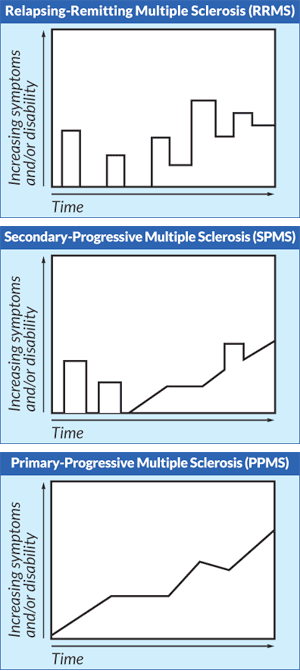As mentioned in the last post, patients with Multiple Sclerosis can present a variety of symptoms that range in severity. It wasn’t until 1999 that the field came to a conclusion to classify each of the four different types of MS. The most common form of Multiple Sclerosis is called relapsing-remitting MS (RRMS). The term relapse refers to the “short” time in which a person experiences new or worsening symptoms for more than forty-eight hours. Up to 85% of individuals who receive a MS diagnosis are diagnosed with RRMS. While researchers and clinicians are still trying to identify relapse triggers, unfortunately these relapses are random and unpredictable. All of the current MS therapies have been used to treat RRMS and do show signs of efficacy by decreasing the number and severity of relapses as well as reducing the amount of damage done to your brain (seen by MRI).
Another type of Multiple Sclerosis is secondary progressive (SPMS). This is when an individual starts off with RRMS and then it progressively gets worse over time. The individual will begin by having relapses but then the relapses will (for the most part) disappear, and the individual develops increasingly worse symptoms over time. If RRMS is left untreated, the majority of these individuals will develop SPMS. Similar to SPMS, primary progressive MS (PPMS) occurs in about 15% of individuals diagnosed with MS. PPMS refers to the complete absence of relapses and the patient steadily develops worsening symptoms over time. Lastly, clinically isolated syndrome (CIS) is when an individual experiences one single cluster of MS related symptoms and does not have any long-lasting implications of MS related symptoms.
